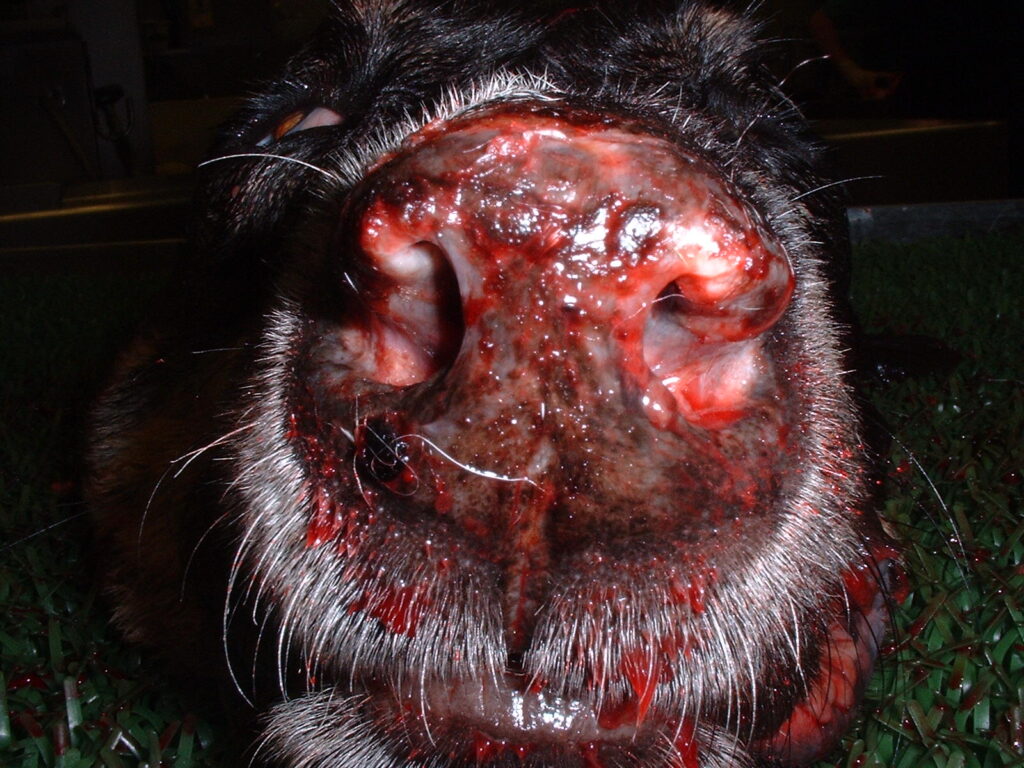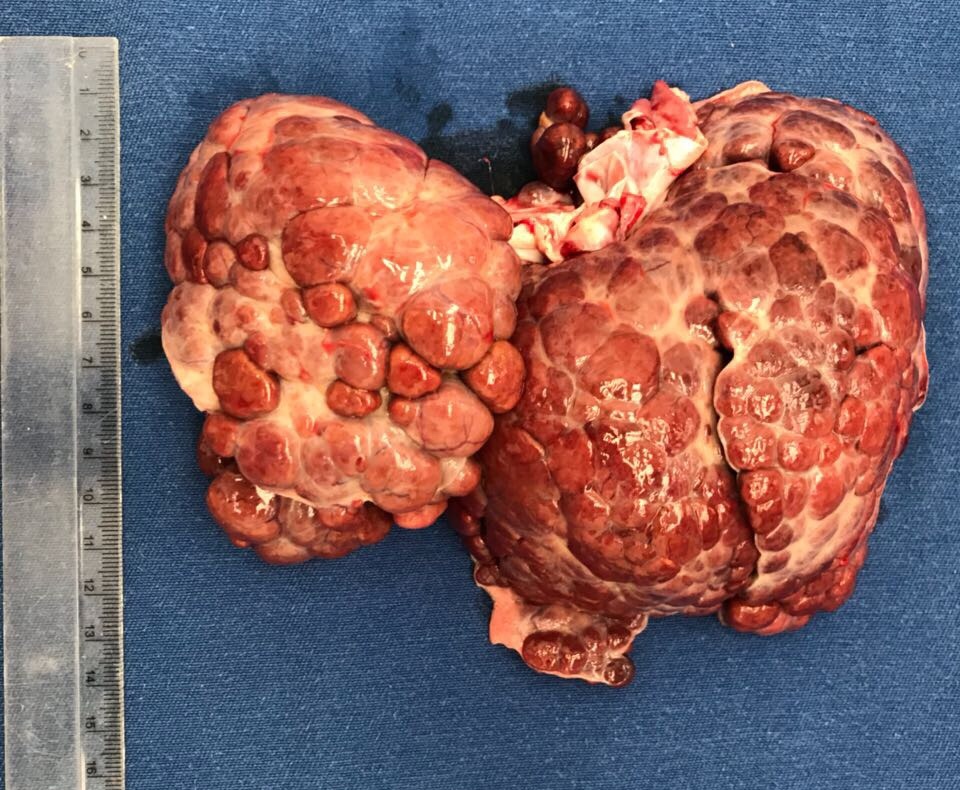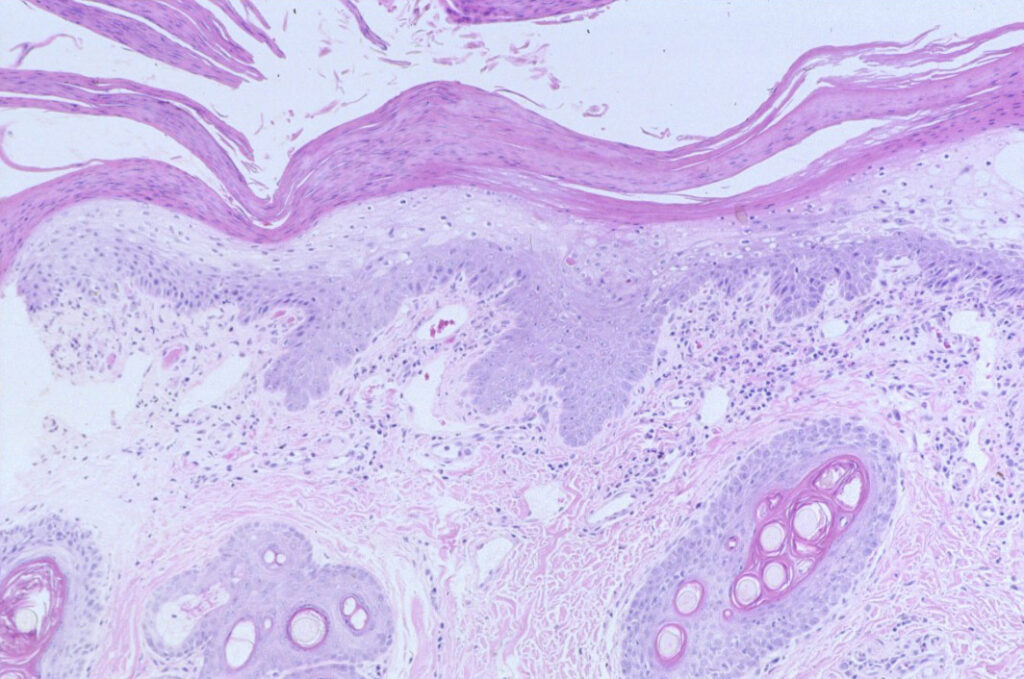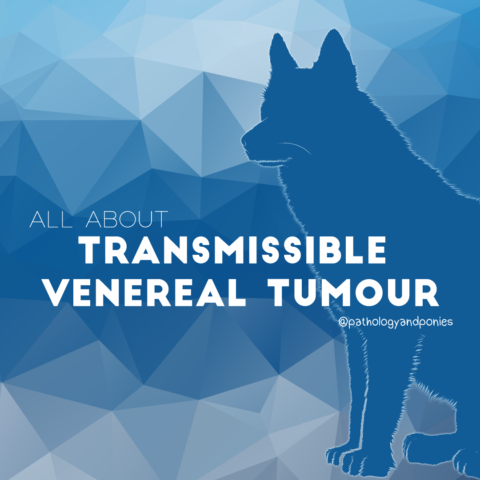Today’s path rounds are on 𝐡𝐞𝐩𝐚𝐭𝐨𝐜𝐮𝐭𝐚𝐧𝐞𝐨𝐮𝐬 𝐬𝐲𝐧𝐝𝐫𝐨𝐦𝐞!
𝐖𝐡𝐚𝐭 𝐢𝐬 𝐢𝐭?
𝐇𝐞𝐩𝐚𝐭𝐨𝐜𝐮𝐭𝐚𝐧𝐞𝐨𝐮𝐬 𝐬𝐲𝐧𝐝𝐫𝐨𝐦𝐞 is also known as 𝐬𝐮𝐩𝐞𝐫𝐟𝐢𝐜𝐢𝐚𝐥 𝐧𝐞𝐜𝐫𝐨𝐥𝐲𝐭𝐢𝐜 𝐝𝐞𝐫𝐦𝐚𝐭𝐢𝐭𝐢𝐬. Putting both of these names together, you get a liver disease (hepato-) affecting the skin (cutaneous) that causes cell death (necrolytic).
𝐖𝐡𝐨 𝐠𝐞𝐭𝐬 𝐢𝐭?
This syndrome is most commonly seen in dogs!
𝐖𝐡𝐚𝐭 𝐜𝐚𝐮𝐬𝐞𝐬 𝐢𝐭?
The actual cause of hepatocutaneous syndrome is unknown, however it gets its name because almost 90% of patients have severe liver disease as well. So, it is thought that liver disease is a contributing factor to developing these skin lesions.
𝐖𝐡𝐲 𝐢𝐬 𝐭𝐡𝐢𝐬 𝐚 𝐩𝐫𝐨𝐛𝐥𝐞𝐦?
Hepatocutaneous syndrome attacks the 𝐞𝐩𝐢𝐝𝐞𝐫𝐦𝐚𝐥 (skin) cells, causing cell death. Affected areas of skin slough off easily, leaving crusty, bleeding areas that are extremely painful. The foot pads also become 𝐡𝐲𝐩𝐞𝐫𝐤𝐞𝐫𝐚𝐭𝐨𝐭𝐢𝐜, or crusted, due to the increased number of dead cells.
𝐇𝐨𝐰 𝐢𝐬 𝐢𝐭 𝐝𝐢𝐚𝐠𝐧𝐨𝐬𝐞𝐝?
Diagnosis is made through skin biopsy! Hepatocutaneous syndrome produces a classic appearance under the microscope of a “red, white and blue” epidermis. What the pathologist is really seeing is red from 𝐤𝐞𝐫𝐚𝐭𝐢𝐧 (the protective layer of the skin), white from swollen and dying skin cells, and blue from 𝐛𝐚𝐬𝐚𝐥 𝐜𝐞𝐥𝐥𝐬, which are the reproducing cells that make new skin cells.
𝐇𝐨𝐰 𝐢𝐬 𝐢𝐭 𝐭𝐫𝐞𝐚𝐭𝐞𝐝?
Unfortunately, there is no specific treatment for this condition. Supportive care, such as increasing amino acids needed for skin health and treating underlying liver disease are helpful. Many patients are euthanized due to a poor prognosis.




𝐏𝐡𝐨𝐭𝐨𝐬
1-2) Examples of hepatocutaneous syndrome on the skin!
3) A very sad looking liver from a dog with hepatocutaneous syndrome.
4) The classic “red, white and blue” appearance under the microscope!
𝐒𝐨𝐮𝐫𝐜𝐞𝐬
Maxie, G. Jubb, Kennedy and Palmer’s Pathology of Domestic Animals, Volume 1. Sixth Edition.
Photos 1-4 © Noah’s Arkive contributor Schelling, Jakowski, Latimer and Rakich, Werner licensed under CC BY-SA 4.0.




